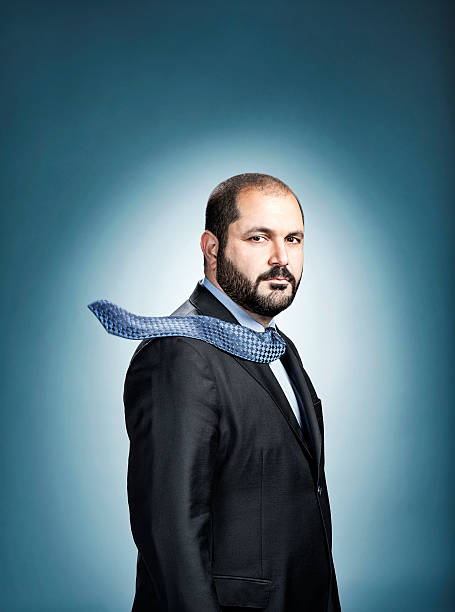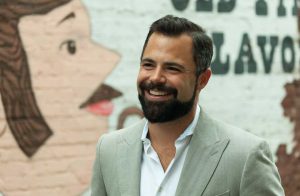Who is Shervin Pishevar?

(Photo by Jamel Toppin/Forbes Collection/Corbis via Getty Images)
Shervin Pishevar is a venture capitalist and entrepreneur who has led investments into companies like Uber, Postmates, Robinhood, Slack, and Airbnb. He is perhaps most prominent for his work with Virgin’s Hyperloop One as co-founder and executive chairman.
Pishevar’s Humble Beginnings
Pishevar was born in Tehran, Iran during the Islamic revolution, he once recalled seeing bombs fall on the city before immigrating to the United States. Filled with gratitude, he spent countless late nights in his youth working on his Apple 2 that his father had saved to buy him, trying to make something of himself. “It scared the shit out of me – if they die and I haven’t actually succeeded, I can never forgive myself,” he told NY Mag.
Networking
Pishevar has been called a “super connector,” for his ability to create relationships with the most powerful in society, even including President Barack Obama.
Uber co-founder Travis Kalanick calls his charm “Shervin’ness.” Kalanick told TheNextWeb that Pishevar’s charm was the chief reason that Uber chose Menlo Ventures (Pishevar’s place of employment at the time) for venture funding. Kalanick was more interested in working with Pishevar as a partner than the terms of the deal his firm offered.
This is Pishevar’s edge in investing and beyond. Financing from a Pishevar-led fund cannot be compared in an apples-to-apples manner to other offers, as he offers additional intangible qualities like making connections in a day that might take another years to make.
Pishevar has expressed that his focus isn’t set on making money, but connecting groups of like-minded people to change the world. Money is simply a by-product of this value-creation. This mindset is similar to that of some of the wealthiest real estate investors: find deals and connect investors and sellers. When you’re able to do this, the money will follow.
Pishevar’s Investments
Pishevar has acted as both an angel investor and a venture capitalist within a multi-billion dollar firm. He’s funded startup darlings like Dollar Shave Club and TaskRabbit, and has funded companies acquired by Google, Facebook, and LinkedIn.
Like many startup investors, Shervin is less concerned with traditional fundamental financial analysis of a company than he is with the entrepreneur and their vision. Shervin often says “people are the best asset class,” expressing that he knows if he wants to invest in a founder within minutes of meeting them.
With that being said, Pishevar doesn’t blindly invest when he likes someone. Substantial due diligence is done, not only to ensure that all of the fundamentals check out (product/market fit, business model, scalability, etc.), but that certain metrics are growing.
While the most watched metrics on Wall Street are financial, like earnings per share or cash flow per share, venture capitalists pay attention to different key performance indicators (KPI) to benchmark the success of a startup. It’s different for each company, for Facebook it was daily active users, for Uber it’s successful trips made. Most venture capitalists are looking for these KPI graphs to look like hockey sticks.
Credit: Forbes
Uber
Pishevar is perhaps best known for his early investment into ride-sharing service Uber and his role as a strategic advisor within the company in 2011. With over 10 billion rides taken, the company has become successful beyond anyone’s wildest dreams.
Pishevar’s then-firm, Menlo Ventures led a $37.5 million investment round which also included funds from Jeff Bezos and Goldman Sachs. According to Fortune, that investment has returned 55x.
When it comes to Uber’s growth, two KPIs get brought up repeatedly: trips taken, and number of cities the service is available in.
Here is a chart comparing different NYC ride services to each other from 2014 to 2018. As you can see, Uber’s ride growth has been explosive.
Here’s another chart, made by Andrew Chen, former head of Rider Growth at Uber, which displays monthly trips taken.
Uber’s city growth has an obvious trickle-down effect on the quantity of rides taken. When Uber is introduced into a new city, they’re exposed to an entire new market, through which they can grow their rides quantity. As they enter more and more cities, they begin to benefit from economies of scale, as Uber becomes increasingly desirable to those who don’t yet have access to it.
Here’s a chart of Uber’s city growth over time:
One of the main ways Uber gains traction in a new city is through referral from existing riders and drivers. Rather than spending their marketing budget on traditional media like television and print media, Uber simply makes an irresistible offer and loses money on the front-end in expectation of making it back through customer loyalty. They offer free rides to riders and bonuses to drivers.
Robinhood
Another industry-disrupting company Shervin invested in is the stock trading app Robinhood. The brokerage offers free commissions and instead creates revenue by selling the order flow of their clients to high-frequency trading firms. While most discount brokerages like TD Ameritrade also do this, the trading firms are willing to pay much more for Robinhood order flow, as the traders tend to be much less informed.
Robinhood is another runaway growth story that Pishevar identified early on. Why Robinhood? How did they amass over four million users and a $5+ billion dollar valuation in just three years, and how did Pishevar & Co spot it?
Just three years into business, Robinhood is worth approximately 30% of rival discount brokerage firm E*TRADE ($18B market cap at time of writing) and approximately 25% of TD Ameritrade ($20B market cap at time of writing), companies that have been in business since 1982 and 1975, respectively.
Robinhood’s main source of revenue is payment for order flow from high-frequency trading firms.
Payment for Order Flow
Because Robinhood is a private company, we don’t have full financial statements from them, only certain filings required by the SEC for securities industry practitioners. With that said, it’s safe to assume that receiving payment for order flow is one of Robinhood’s biggest revenue generators.
What is payment for order flow?
Think of a condo complex. Most of the time, if you want to sell your unit, the HOA has the right of first refusal to purchase it from you. If you were to think about selling your condo as an order in the stock market, the order would first get sent to your HOA. Depending on if you HOA purchases the condo or not, the order would then be routed to the general market, where anyone can buy it.
Payment for order flow is when people pay for that right of first refusal. High-frequency trading firms pay stock brokers to send their orders through them before being routed to the rest of the stock market.
Why do they do this? Because some orders are mispriced. Some traders enter a “market order” which is an order that doesn’t specify a price to pay for a stock. If the stock is trading at $10, you can theoretically pay $20 for shares because the intention of the order is to take whatever shares are currently available in the market, as opposed to writing an order that says, essentially “I want to buy at $10” and waiting for someone else to sell you shares at $10.
So, when a market order is sent to a high-frequency trading firm, they’re the only ones allowed to interact with it. This means that they can do some funky things, like fill your buy order well above the current market price, and they get to pocket the profit.
Most brokerage firms like TD Ameritrade and E*TRADE already do this. So, what’s the big deal, how is this innovative on Robinhood’s part?
Because they receive more than 10x the per-share industry average. Why would these firms pay so much more for Robinhood orders? Because they know the clientbase is made up of mostly young, uninformed traders who will make mistakes, which makes the HFT firms more money.
According to Robinhood’s Q3 2018 SEC rule 206 disclosure, they make approximately $260 per $1,000,000 traded through payment for order flow. This is compared with the industry average of a mere $22 per $1,000,000 traded.
When putting this into context, we can begin to understand some of Robinhood’s business decisions and UI designs.
For example, Robinhood’s introduction of options trading, then multi-legged options trading, and finally, cryptocurrency trading, all can be viewed differently when applying this lense.
From the outside, it can seem like a buzzing startup trying to hop on any trend that might make them a quick buck. However, when you understand that HFT firms will pay much more for order flow from a young, risk-hungry clientbase, these decisions can be seen as savvy.
When putting these factors together, you can appreciate Pishevar’s investing acumen. It’s not simply investing in good ideas, hoping for a moonshot. When looking at his portfolio, the companies all have similar traits. Not only do they have product/market fit, but they have massive levers of growth as seen in the payment for order flow example.
Airbnb
Airbnb is another startup invested in by Shervin. You might be noticing a trend here. These are companies that completely disrupted their industries. Considering that just about every Silicon Valley startup claims to be a disruptor, it’s shocking to find such a high concentration of them in one portfolio, given their rarity.
Shervin loves the sharing economy. He has said that the movement is “much bigger than any specific app, this is a movement as important as when the web browser came out.”
Shervin’s Airbnb investment is a great example of his intuition about entrepreneurs. When talking about investing in founders rather than their products, Shervin said “If someone is so obsessed and possessed by their vision, and they’re actually making sense, there’s a magical moment… you can tell very quickly.”
It’s clear that he saw the passion within Airbnb founders Brian Chesky and Joe Gebbia, who once slung Obama-themed cereal to raise money for their startup. Chesky and Gebbia’s path during the early days of Airbnb is the best example of two men obsessed with their vision.
Early on, Chesky and Gebbia brought on developer Nathan Blecharzyk as a technical co-founder. Chesky and Gebbia’s personal touch and design sensibilities were a perfect match for Blecharzyk, who helped scale and systemize some of their features and marketing ideas.
Chesky told FastCompany “Do things that don’t scale… We start with the perfect experience and then work backward. That’s how we’re going to continue to be successful.”
Airbnb’s early promotional efforts can be divided into two categories: technical uses of leverage via Blecharzyk’s efforts, and creating the best experience possible through personal touch via Chesky and Gebbia’s efforts.
The best example of Airbnb leveraging their marketing is their Craigslist bot. Blecharczyk came up with a clever way to market Airbnb on autopilot, virtually for free. He built a bot for Craigslist that automatically created a Craigslist post for each Airbnb listing and emailed each user with a link to publish the Craigslist post. This allowed Airbnb to co-opt Craigslist’s user-base. Additionally, they created a bot to send emails to those posting rental properties on Craigslist, asking them to list the property on Airbnb.
A great example of Chesky and Gebbia’s use of personal touch and actions that don’t scale is when they flew to New York to stay in 24 different Airbnb rentals to judge why the service wasn’t catching on as quick in the city. They came to the conclusion that the issue was a lack of quality photography on listings.
Chesky told FastCompany that “A web startup would say, ‘Let’s send emails, teach [users] professional photography, and test them. “We said, ‘Screw that.'” They went on to rent a $5,000 camera and manually went to each New York rental, taking professional pictures for them.
Summary
Shervin Pishevar, who has exited out of multiple unicorn startups, has already made his mark on the technology industry at the ripe age of 45. His leadership and networking skills have been deployed within companies like Uber or Airbnb that are changing the way our economy works.
Not only did he provide these companies capital, but he connected founders to the right people, and used his varied knowledge of startups to help them grow and scale.
Follow Shervin on Twitter to learn more about the way this VC thinks.


